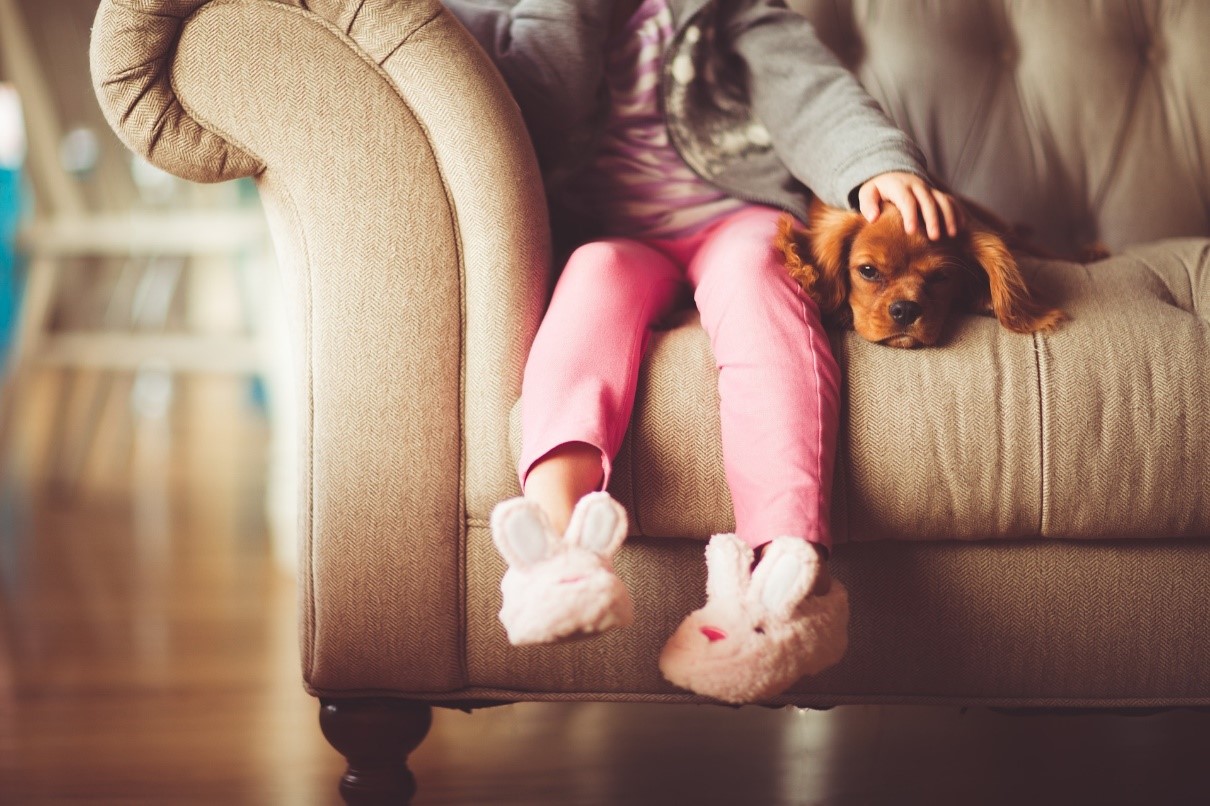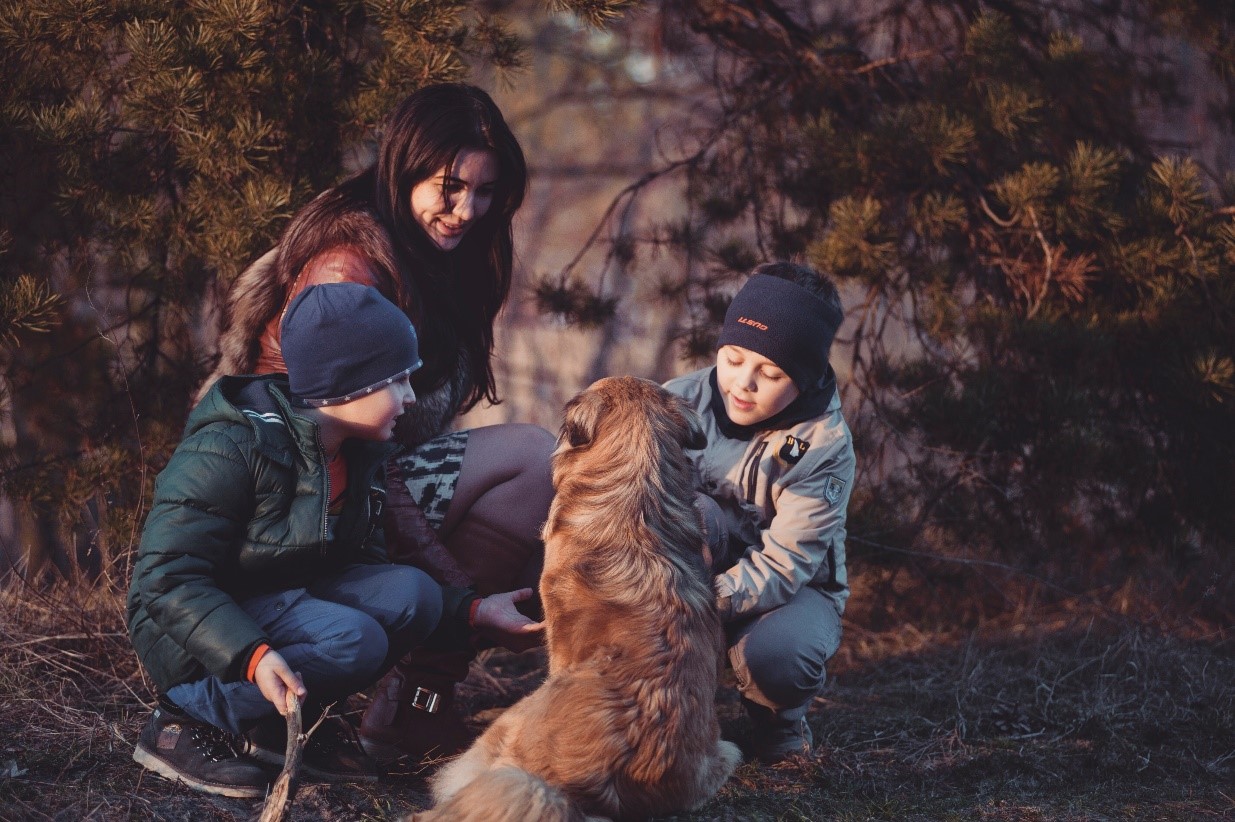Dog Bite Prevention For Kids
Dogs are wonderful, lovable creatures that make ideal companions. However, they’re a lot of responsibility, especially if you have children. Being a parent of both kids and a pet means introducing a new, inclusive dynamic.
Unfortunately, children are the most common victims of dog bites, and typically, this is due to dogs reacting to something. In other words, most bites are the result of provocation. This means most dog bites are preventable, as they happen during regular everyday activities. However, little ones—and even some adults—may not know how to approach a dog. Children are unaware of social distance and how fragile dogs really are—they’re living things with feelings, too! Therefore, your kids are going to need to understand how to get along with the many four-legged friends they see day in and day out. Teach your children our dog bite prevention tips to help ensure bite-free experiences.
Never approach a dog when they’re eating or sleeping
Children certainly don’t want others touching their food, especially without warning. The same goes for dogs—they don’t want to be disturbed. Like you and your children, dogs want to eat in peace, and interrupting meals can startle them.
This also applies to sleeping. What if someone woke you up in the middle of a deep sleep? Disturbing a dog may cause them to snap. On the same hand, kids should not sleep with their pets because they could easily wake up the dog and receive an unexpected, painful bite.
Be mindful when a dog is around their toys
Just like human beings need “alone time” with a favorite book, dogs need personal space. Be sure your child knows never to take a bone or toy away from a dog. Additionally, they should never try to outrace a dog for the same toy. With proper training, dogs will know to give up something without being possessive. If your child sees a dog aggressively growling, barking, or tensing up, it’s time for them to back away and find Mom and Dad.
Avoid “roughhousing”
Playing tug-of-war, climbing on backs, tugging on ears, pulling tails, and other rough behavior can scare dogs—or even challenge and excite them depending on the dog’s temperament. The key is to be calm and gentle. Toss a ball and have the dog fetch it. Move slow. Be sure to reward your dog if they’re showing relaxed behavior around the kids, especially when you’re first training them.
Speaking of training, classes can eliminate aggressive behavior before it becomes a problem. Dog training classes are also great if your dog currently displays hostile tendencies. Guiding your furry friend through controlled situations and teaching them basic commands helps build a trustworthy bond between dog and owner.
If your children feel threatened by an aggressive dog, they shouldn’t scream or run away. Instead, kids need to back away slowly, avoid eye contact, and speak firmly without yelling. This helps prevent the dog from chasing after them.
Too much is probably too much
At a young age, children learn to show affection toward their parents and siblings. On the contrary, there are dogs that don’t like hugs and kisses. Dogs may be a part of the family, but they’re going to react to love differently than (most) humans. Thus, too much affection is, well, likely to be too much. At the end of the day, dogs are not squishy, cuddly stuffed animals.
Kids should keep their faces away from dogs to avoid accidental biting. Additionally, dogs need to come to the kids, not the other way around.
Be cautious around dogs, whether you own them or not
A general rule of thumb to teach kids is to never touch a dog that they don’t know. Avoiding to adhere to this rule is a common cause of personal injury cases, but over half of dog bite injuries actually happen in the home. Regardless of whether they know the dog or not, kids shouldn’t approach and pet it unless:
- They ask their parent as well as the dog’s owner
- They see the dog is on a leash
- They pet on the side of the neck or on the chest, avoiding the dog’s nose and mouth
- They recognize the dog’s body language and expression
If your kid can “check all the boxes,” then they should let the dog see and sniff them before petting. Children should never approach a dog tied up with a rope or chain, behind a fence, or in a parked car.
It can be tricky to recognize when a dog is ready to pet. For instance, a wagging tail doesn’t always mean a dog is happy. Plus, a dog’s breed doesn’t necessarily determine whether it will bite, but rather, the dog’s upbringing and consequential temperament. Other than growling and barking, here are the most common signs that show a dog will attack:
- Hunched position
- Showing the whites of its eyes
- Showing teeth and/or licking its lips
- Fur on the back of the neck is raised
While it may seem like kids shouldn’t be around dogs whatsoever, there are plenty of ways the two can interact and have fun. In fact, proper socialization is important to shaping your dog’s behavior. The key to dog and child safety is consistently polite interactions, avoiding isolation and confrontation.
Any dog can bite if provoked, so children must learn to recognize the warning signs and what to do in each situation. Reading a dog’s body language is important, as they’re always certain to tell you when they’re uncomfortable in a situation. Don’t let a dangerous situation escalate.
You should supervise your child around dogs at all times, even if your child has demonstrated acceptable handling skills. For most parents, babies and children under the age of 10 need constant supervision with a dog.
Dog bite prevention for kids is important, and while dog bite cases are rare, they still happen. If a dog bit your child or if your dog has attacked someone, seek help. Mayor Law’s Travis Mayor is a personal injury attorney who helps victims restore their lives through maximum compensation and minimum hassle. Call today for a free consultation.



